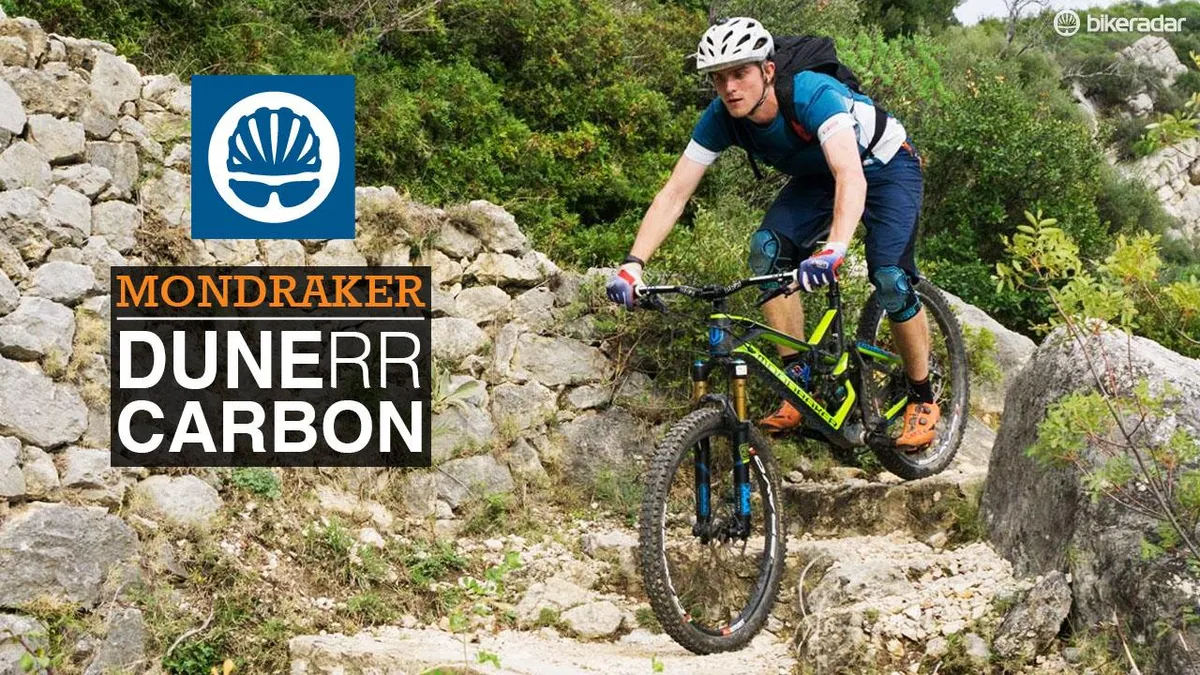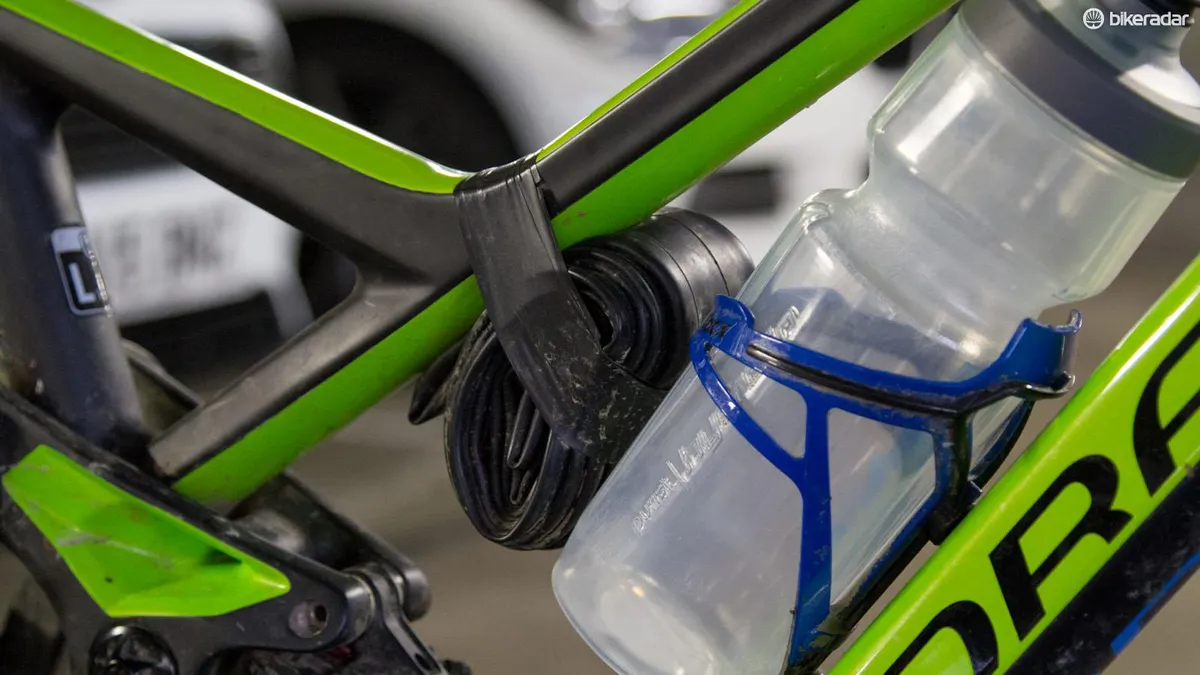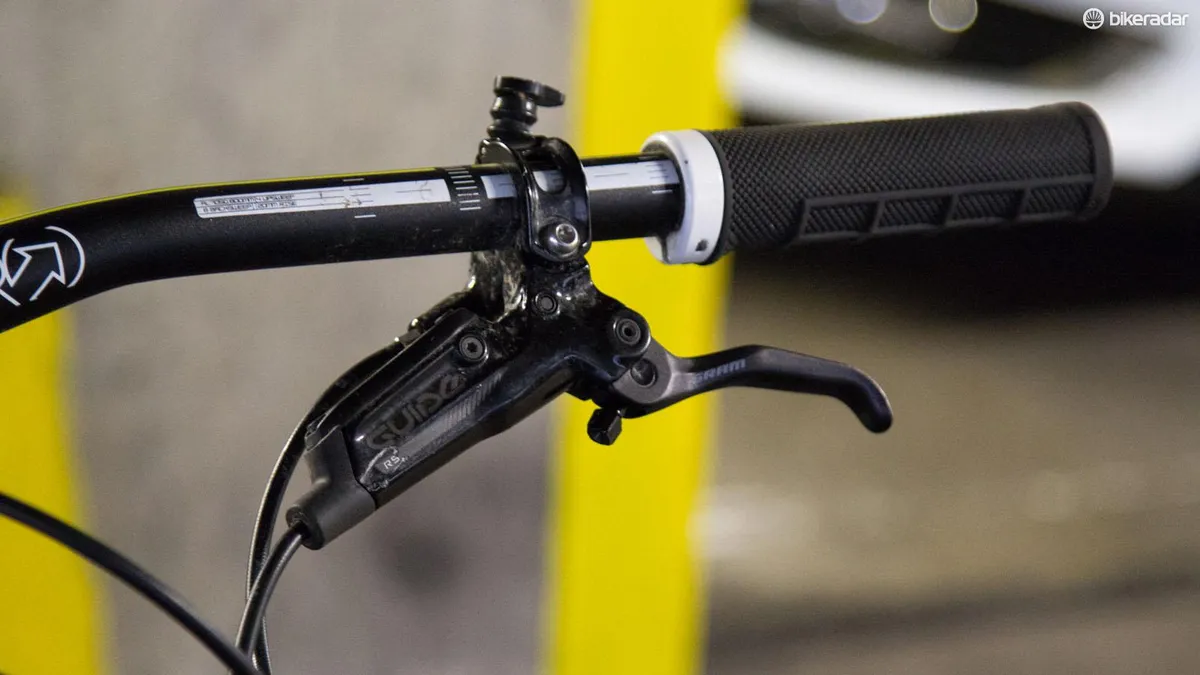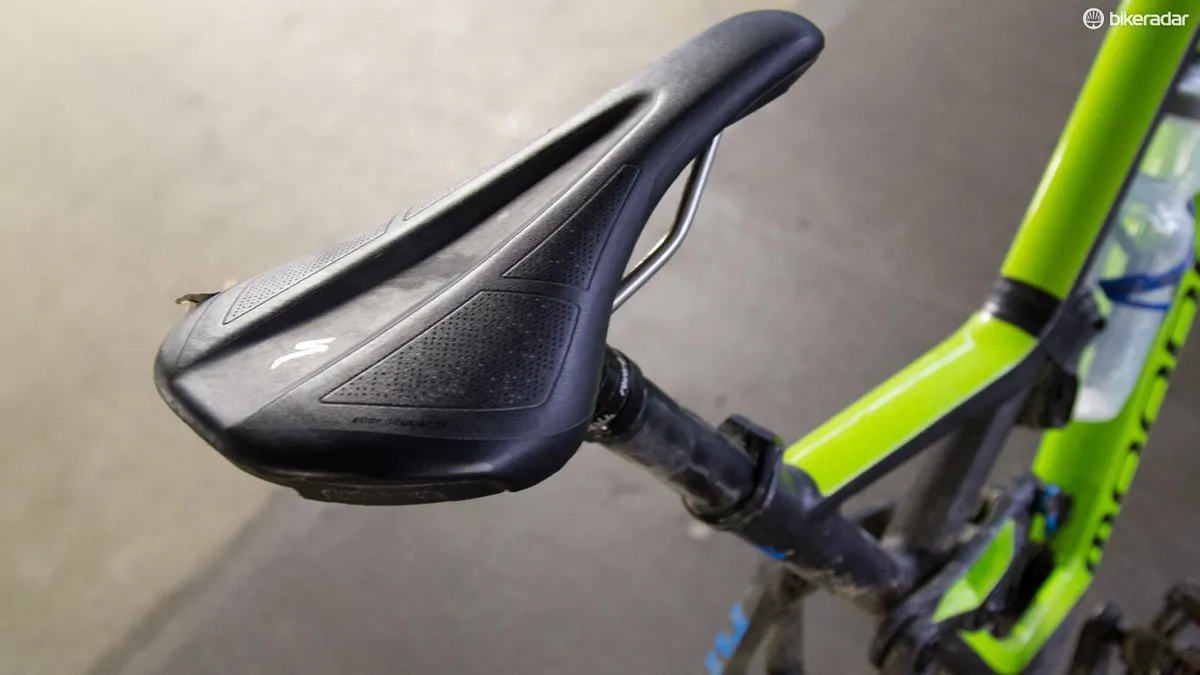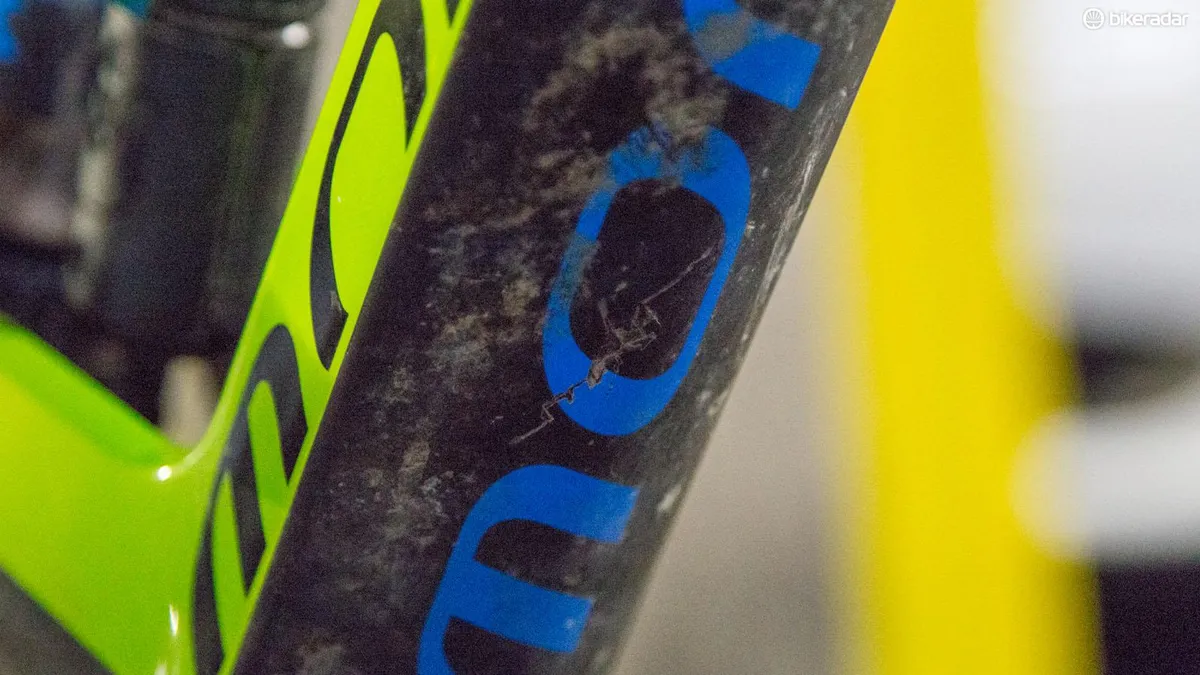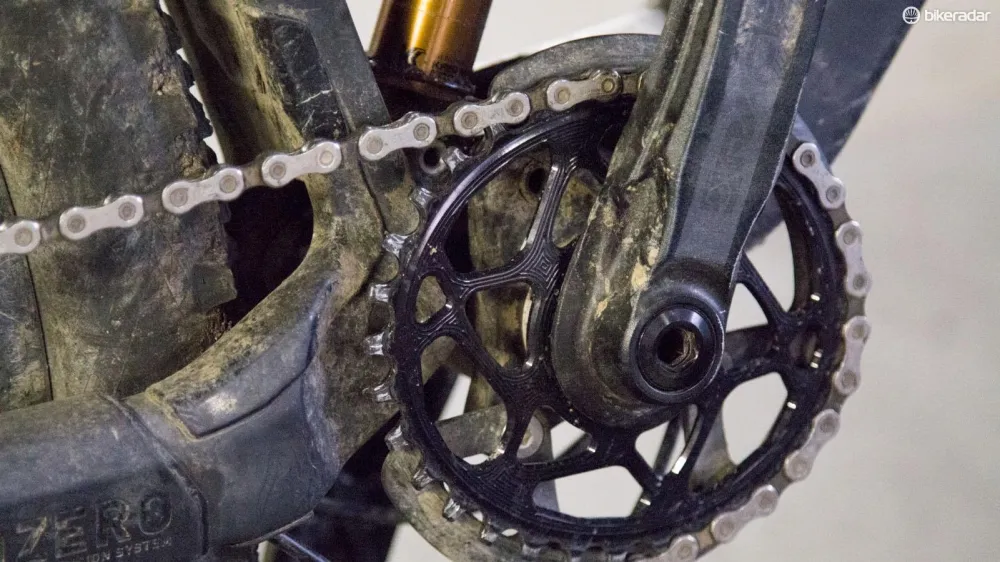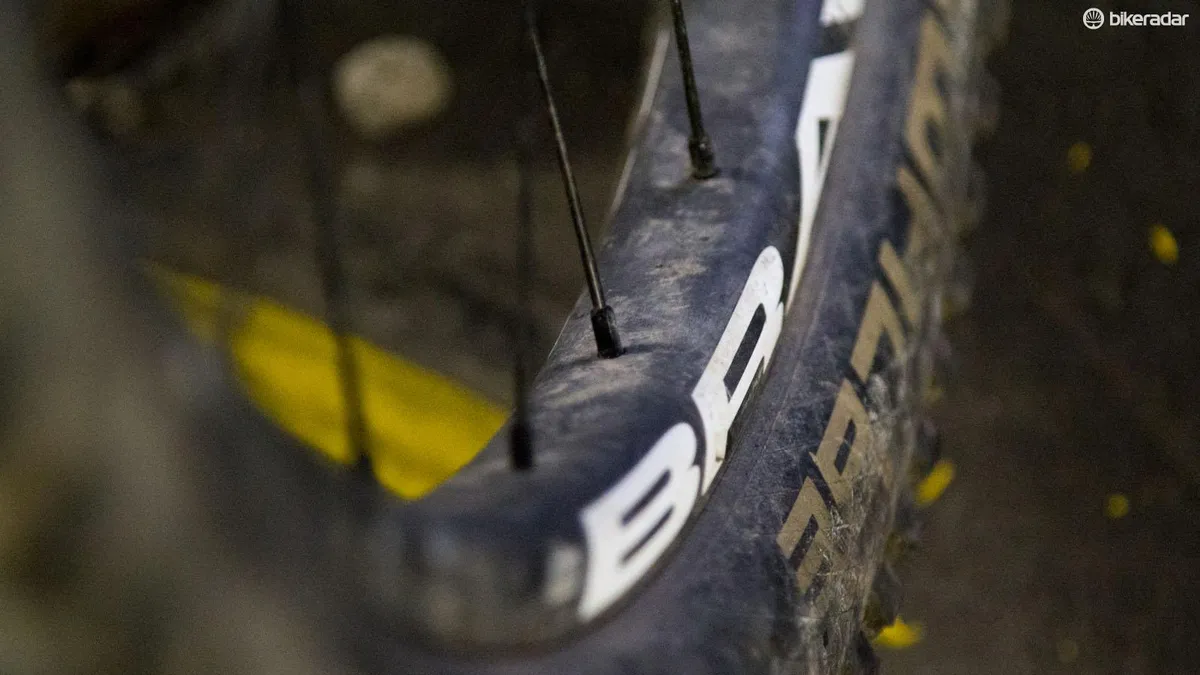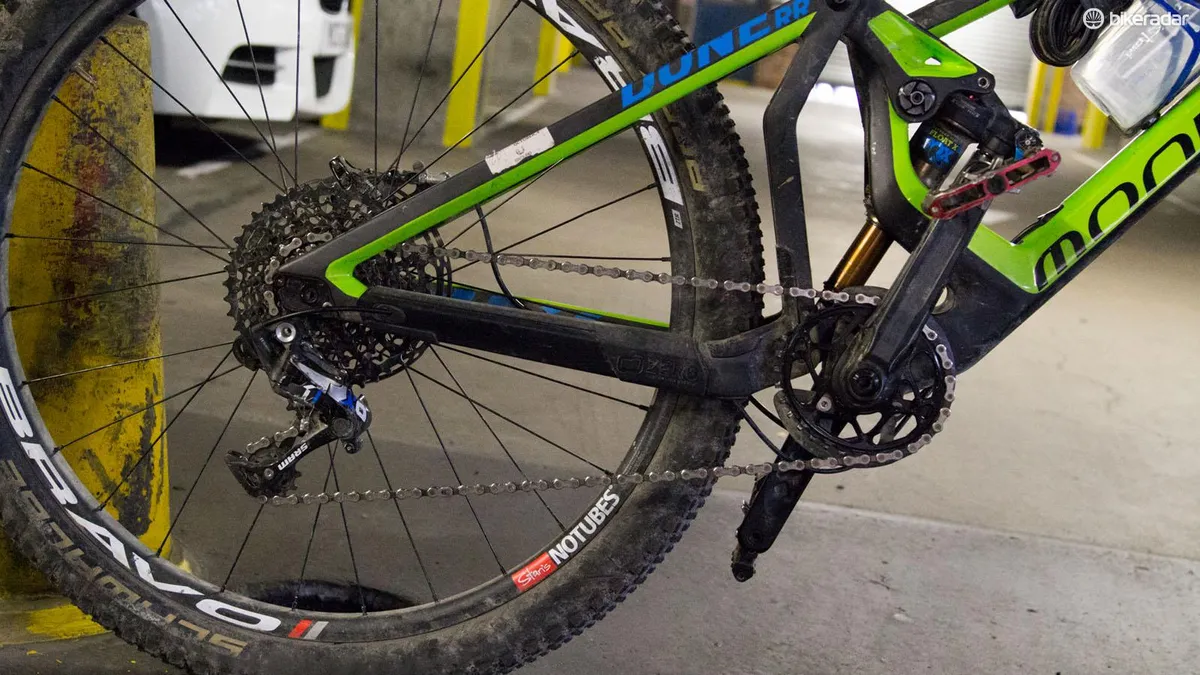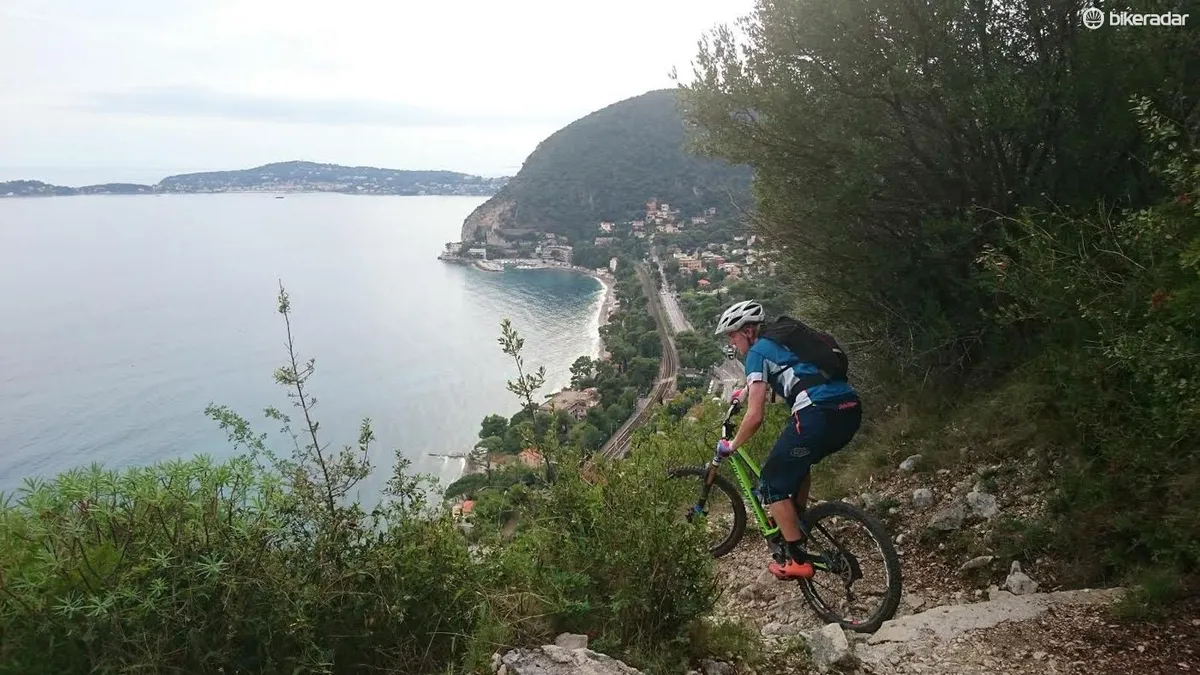Unless you’ve been living in a cave for the last few years, you’ll probably have heard of the Enduro World Series. Now in its third year, the EWS aims to determine the World’s best all-round mountain biker, with eight rounds of multi-stage racing taking place across the globe. In Finale Ligure, Italy, following two hard days of tight racing, this year’s winners were crowned. Spoiler alert - I wasn’t one of them.
- The course: Finale Ligure EWS. Five timed stages over two days; all predominantly downhill, but with some brutal climbing thrown in, along with plenty of steep, rocky terrain.
The equipment goal: Light and efficient enough for the climbs, but confident-handling, comfortable and tough for those timed descents.
The Horse: Mondraker Dune Carbon RR with a few extra-special tweaks.
null
Backing a winner
When I was invited to race the final round of the EWS, the only question was this: what bike to bring?
A whole range of bikes were considered from many different manufacturers. The first decision was what wheel size to pick. I have tested a whole range of 29ers, and often find them faster than their 27.5in counterparts. For this reason, a long-travel 29er is my usual weapon of choice when racing, but the reputation of Finale made me reconsider. The steep steps and tight switchbacks made me worry that a 29er might skip over the bumps, making it harder to slow down and make the tight bends. I have experienced this in the steep, rocky terrain of the UK’s Lake District. There is also a general lack of aggressively-angled 29ers on the market and I maintain that geometry is the most important aspect of mountain bike design. For this reason, I settled on using a 27.5in bike for this race.
At 6ft 3in, I find that most bikes are simply too short for me, not allowing me to ride as dynamically as I’d like on tricky terrain. If you want a long, fast bike, one name springs immediately to mind: Mondraker.
When the Spanish firm launched a new lighter, stiffer more drool-inducing carbon framed version of the Dune, my mind was made up.
Now, the top-end Dune Carbon XR wasn’t available in the UK and BikeRadar has already tested one.
Related reading: Mondraker Dune Carbon XR review
The Dune RR was the next best thing, so this was my weapon of choice. The XL size was not available in Europe at the time, either (getting an XL test bike is always a pain), and at my height, I would have much preferred this size. This was a real blow, but the size large Dune still has a longer reach figure than pretty much any XL bike out there. It’s about 20mm longer than average XL enduro bike, and 20mm shorter than the XL Dune: offering some of the benefits of Forward Geometry for me, but not all. For this reason, I decided to go for the Dune RR, size large and all.
Modifications
To turn the Dune into the ideal enduro weapon for Finale, I made one key upgrade: the wheels. The stock DT E1700 wheels aren’t bad, in fact I consider them a benchmark wheelset, but I had something special in for testing from Stan’s, namely their new Bravo Team wheels. It would be rude not to use them, after all.
Black magic rims
Stan’s claims that in lab tests they can survive impacts which caused their competitors’ carbon hoops to crack or puncture. They do this by making the rim broad but shallow, which allows the rim to bend inwards under impacts by up to 10mm, while remaining stiff laterally for sharp cornering. They also use a short bead-hook that gives a rounder profile to the tire, despite the fairly broad 26.6mm internal width.
These Team versions weigh in at 1630g on our scales, and feature a pretty snappy 10 degrees of engagement. Stan’s do an Ultimate wheelset which is about 65g lighter (on our scales), and boasts an even faster, 5 degrees engagement. I have a theory that super-fast freehub engagement can cause increased pedal-feedback through the drivetrain, reducing suspension sensitivity, so I was very happy with the (cheaper) Team wheelset.
Tired and tested
The Maxxis High Roller II Tires are a classic, but I find they can break away unpredictably when cornering hard, particularly on wider rims. These were swapped out for Schwalbe’s semi slick Rock Razor on the rear and Magic Mary on the front, both in Super Gravity reinforced casing. It’s a combination intended to deliver hard-cornering traction, whilst remaining fast-rolling on the climbs.
Cockpit control
I found the bar height on my bike too low, so I decided to swap the bar. A Pro Atherton bar sports a 20mm rise - only 8mm higher than the stock bar, but the 8 degrees of backsweep and 31.8mm clamp, rather than larger diameter 35mm stock bar suit my tastes. This required me to swap stems. I opted for a 40mm Burgtec Enduro Mk 2 item. Increasing the stem length by 10mm may counteract some of the benefits of FG, but since the bike was technically a size too small for me, this seemed logical. Also, the backsweep of the bar starts quite close to the stem; this pushes the grips backwards relative to the steerer. As a result, the ends of the grips were perfectly in line with the steerer tube – spot on.
I also took the Specialized Henge Elite saddle and Sip grips off my long-term test bike, as I know I find them comfortable. I didn’t want to risk committing to four consecutive long days riding on unfamiliar contact-points.
Running rings
The Dune has a fairly high level of anti-squat, which helps to keep pedal-bob in check when pedalling out of the saddle with the shock open. However, I did occasionally notice (when concentrating very hard) that, in common with most multi-link bikes, there was a touch of pedal kickback when the suspension compressed rapidly. This chain-effect numbs the rear suspension, reducing traction.
As an experiment, I fitted an Oval chainring half way through the race. Although it had the same number of teeth (32) as the stock ring, the oval shape puts the chain-line higher up when the pedals are level (which is most of the time when descending). In theory, this should reduce the chain-growth as the suspension compresses, resulting in less pedal-kickback and more suspension sensitivity – particularly important when running a semi-slick rear tire! I am pretty convinced that this worked, as I certainly noticed less feedback through the pedals, but I didn’t test back-to-back with the stock ring to see if suspension action was genuinely improved.
The race
Arriving in Finale, I couldn’t imagine a better location to conclude a race series. The beaches, the food, the atmosphere make it the perfect stage. The day prior to the race, I took the Dune for a quick ride, ending in a swim in the sea, a pizza calzone and a beer. This was the pleasant calm before the storm.
On Thursday, the weather took a turn for the worse and Friday’s practice was cancelled. Worse still, uplifting was allowed during practice, but my uplift plans fell through. With only one day to practice all 6 stages, my work was cut out. Nevertheless, I managed to practice stages 1-4 by pedal-power on Thursday, but stages 5 and 6 would have to be raced blind.
After a compulsory rest day on Friday as the storm rolled by, the race was on. The stages were rocky, rough and physical, with a lot of pedalling thrown in. Ending day one with a technical and steep plummet towards the Mediterranean was a particular highlight. Thronged with Italian fans screaming what sounded like “die!, die!, die!” (apparently, it means “go!” in Italy, but nobody warned me!), it was an incredible buzz. Day two’s stages were muddy and technical, with twisty corners and ruts galore. This was great fun.
Riding these stages blind wasn’t ideal, particularly as I hadn’t accounted for how devilishly long and physical stage 5 would be, and I did suffer a crash whilst attempting to overtake a slower rider on an ill-conceived inside line. Worse, this crash twisted the bars; unaware of how much longer the stage would drag on, I pushed on with the wonky cockpit till the bitter end. Despite such issues (more on that later), I was able to push on hard for the most part, carrying good speed in the technical sections, and having great fun doing it!
So how did it perform?
Although smaller than I would have liked, Mondraker’s forward geometry is still noticeably roomier than any other enduro bike I’ve ridden. This makes a huge difference when it comes to pushing hard on loose, rocky terrain. It gives that bit more space to weight the front wheel when needed, without feeling precariously over-the-front when the going gets steep. When it came to those tight switchbacks, some friends of mine assumed I’d be lost on the Mondraker, unable to manoeuvre the long wheelbase round.
In reality, though, even a properly-sized FG bike is around 40mm longer than average, which only adds about 3 percent to the wheelbase. That longer top-tube makes a huge difference to how aggressively you can ride it though; affording confident sliding, nose-pivoting and scruff-of-the-neck manhandling through the bends. More intuitively, FG boosts handling confidence on the straights, while the short stem and long front-end seem to make sliding through muddy corners more controllable and predictable. It’s great fun.
I would have preferred a taller bar height when it got really steep, and a slacker head angle would have helped too, as the steering was occasionally slightly twitchy. The top-end XR model would have solved both of these problems though thanks to its 170mm fork and the fact it comes with a range of angle adjusting cups, which can be purchased aftermarket.
Suspension setup
The Fox Float X shock performed brilliantly with Mondraker’s Zero suspension design, offering a supple beginning-stroke and just enough progressivity towards the end. Despite the efficient linkage design, the lockout feature was handy for the long, tarmac climbs between stages, which could take up to two hours. I used the fork lockout, too, allowing me to get out of the saddle on the road without wasting energy to pedal-bob.
The FIT4 damping cartridge on the Fox 36 fitted doesn’t provide the precise damping control of the more adjustable RC2 version, however, and I think the high-speed tune it offers is a little too firm, even with the compression dial fully open. I used one orange and one blue spacer to keep the fork high in its travel, combined with 0-8 clicks of compression, depending on the steepness of the stage. If the bar was higher and the head angle slacker, I would have run the fork softer.
Crisp and precise
Made with carbon tech and pivot hardware borrowed from Mondraker’s Summon DH bike, the Dune’s back end is nice and stiff. Combined with the sturdy wheels and tires, this allowed for sharp handling manners on the rocky, tight corners. Particularly when picking up the back wheel and dropping it down again mid-switchback, when many bikes wobble and ping as they flex sideways.
After the brutal assault of the rocky racecourse, the Stan’s Bravo Team wheels remain straight and true, albeit after the odd nipple-tweak (genuine technical term). The wide rim and bead-socket design held the tires firm with minimal carcass-roll, allowing pressures as low as 22 psi up front despite the rough terrain. This resulted in the rim smacking against rocks a few times, but ours are dent and crack free (as far as I can tell) and the supergravity tires didn’t puncture or burp once. Very impressive.
Issues
• As I mentioned, I could have done with a higher bar, such as a 30-40mm riser.
• The Burgtec Enduro MK2 stem I fitted was a real disappointment. It regularly twisted on the steerer during practice and racing, despite tightening the bolts way beyond recommended settings, greasing the bolts and degreasing the steerer too.
• A rock strike in practice caused a small crack in the downtube, but didn’t penetrate all the way through. When I sustained the damage on first day of practice, I made a note of the length of the crack; I’ve done about 10 days of hard riding on it since then and it hasn't propagated, so for now at least, it's not getting worse. While our sample bike had no downtube protector, Mondraker assure us the production bikes will. However, these will only cover up to the 'M' of Mondraker, and my damage was on the O (higher up), so it wouldn't have helped in this (freak) occurrence. All carbon frames are vulnerable to this kind of damage, but we’d strongly recommend adding some additional protection to the rest of the downtube based on our experience.
Summary
Mondraker have pulled a blinder with the Dune. It’s stiff, light and boasts superb suspension performance. Above all, the forward geometry concept continues to impress, especially for racing applications. The amount of pedalling involved in Finale surprised me. If I was to compete again, I would consider using a 29er, but I wouldn’t want to sacrifice the roomy geometry and sorted suspension offered by the Dune. A long bike with a slack head angle and 29in wheels could be the ideal weapon of choice for my riding style, but such a bike isn’t on the market… for now, at least. Watch this space!
